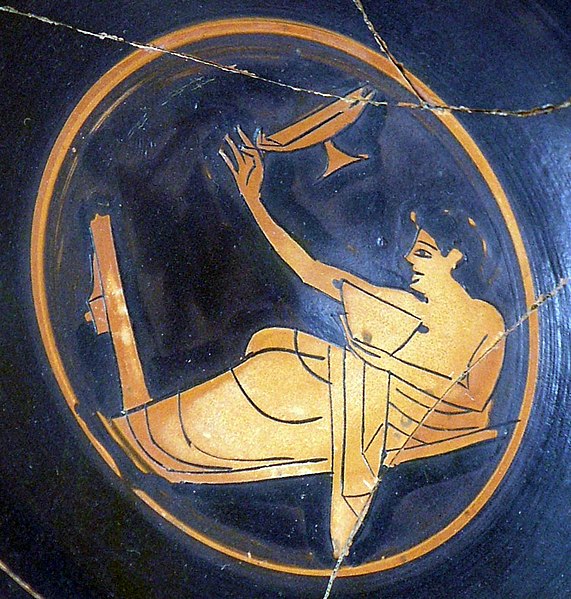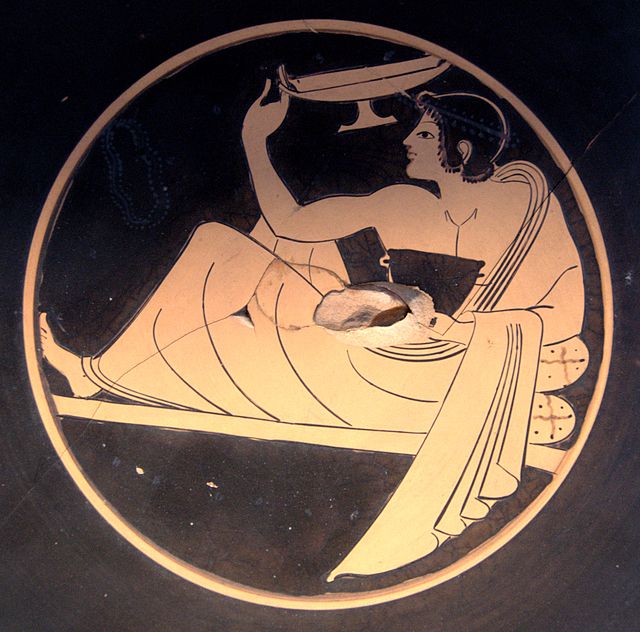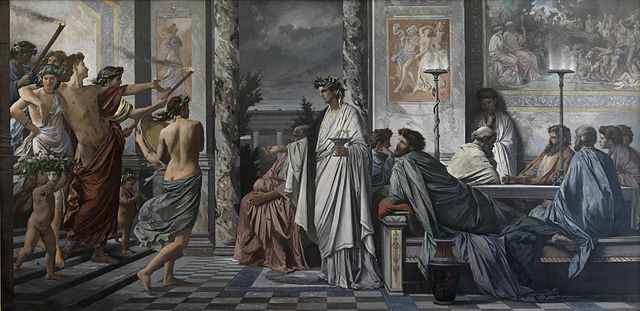Kottabos was a game of skill played at Ancient Greek and Etruscan symposia, especially in the 6th and 5th centuries BC. It involved flinging wine-lees (sediment) at a target in the middle of the room. The winner would receive a prize, comprising cakes, sweetmeats, or kisses.
Kottabos player, red-figure kylix, c. 510 BC, Ancient Agora Museum, Athens
Attic red-figure psykter, by Euphronios, c. 520 BC
Symposium scene with kottabos player (center). Fresco from the Tomb of the Diver, 475 BC. Paestum National Museum, Italy.
Kottabos player; red-figure Attic kylix. Louvre, Paris.
In Ancient Greece, the symposium was a part of a banquet that took place after the meal, when drinking for pleasure was accompanied by music, dancing, recitals, or conversation. Literary works that describe or take place at a symposium include two Socratic dialogues, Plato's Symposium and Xenophon's Symposium, as well as a number of Greek poems, such as the elegies of Theognis of Megara. Symposia are depicted in Greek and Etruscan art, that shows similar scenes.
A symposium scene on a fresco in the Tomb of the Diver from the Greek colony of Paestum, in Italy, 480–470 BC
A female aulos-player entertains men at a symposium on this Attic red-figure bell-krater, c. 420 BC.
Plato's Symposium, depiction by Anselm Feuerbach
Pietro Testa (1611–1650): the Drunken Alcibiades Interrupting the symposium (1648)








